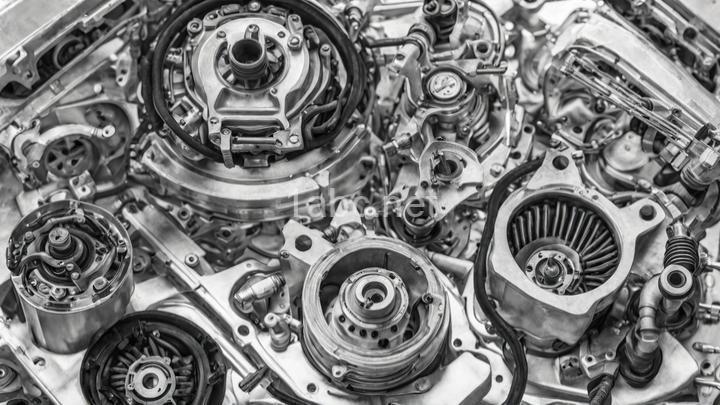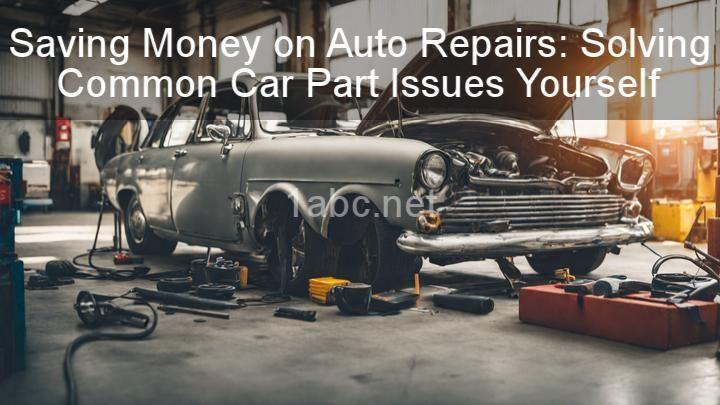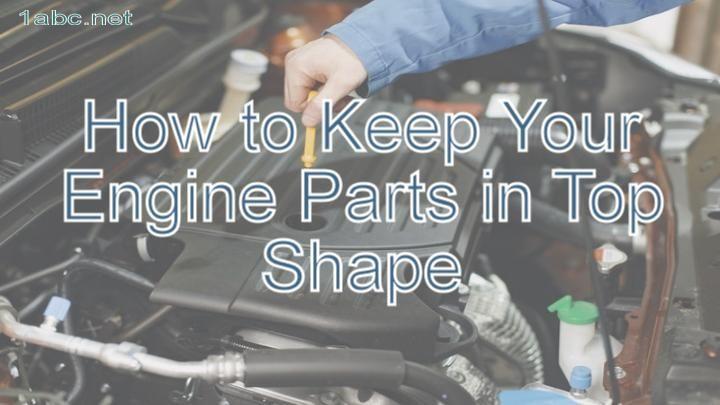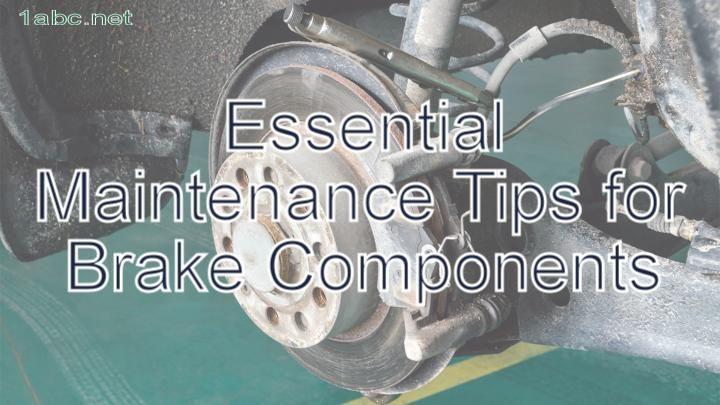The Ultimate Guide to Properly Maintaining Auto Parts
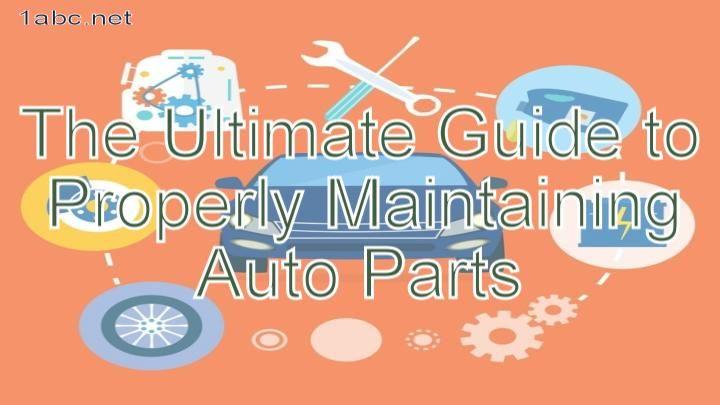
Introduction:
Welcome readers to this comprehensive guide on properly maintaining auto parts. We understand that taking care of your vehicle can seem like a daunting task, but it is essential for ensuring safety, performance, and longevity. In this guide, we will provide you with helpful tips and guidelines to make auto part maintenance a breeze.
I. Understanding the Basics of Auto Part Maintenance
A. Regular Inspections:
Regular inspections play a crucial role in identifying potential issues before they become major problems. By visually inspecting different auto parts such as belts, hoses, and filters, you can catch signs of wear and tear or damage. Look for fraying or cracks in belts, leaks or bulges in hoses, and clogged or dirty filters.
It is also important to pay attention to any signs that indicate potential issues. Strange noises, vibrations, or odors can all signify problems with your auto parts. If you notice anything out of the ordinary, it is best to have it checked by a professional.
B. Fluid Check and Replacement:
Checking fluid levels regularly is vital for the proper functioning of your vehicle. Some of the fluids you should regularly check include oil, coolant, brake fluid, and transmission fluid.
To check the oil level, park your vehicle on a level surface, wait for the engine to cool down, and locate the oil dipstick. Pull it out, wipe it clean, and reinsert it. Then, pull it out again and check the oil level. If it is below the recommended level, add oil accordingly.
Coolant levels can be checked by locating the coolant reservoir and checking the markings on it. If the coolant level is low, add a mixture of coolant and water as per the manufacturer's recommendations.
Brake fluid can be checked by locating the brake fluid reservoir and checking the markings on it. If the level is below the minimum mark, it is important to add brake fluid to the appropriate level.
Transmission fluid levels should be checked while the engine is running and the transmission is at operating temperature. Locate the transmission dipstick, pull it out, wipe it clean, reinsert it, and check the fluid level. If it is low, add transmission fluid as required.
It is also important to replace these fluids at recommended intervals. Refer to your vehicle's owner's manual for specific guidelines on when and how to replace them.
II. Taking Care of Specific Auto Parts
A. Engine Maintenance:
The engine is the heart of your vehicle, and proper maintenance is essential for optimal performance. Some tasks you should perform regularly include changing the oil, replacing air filters, and cleaning fuel injectors.
Changing the oil at recommended intervals ensures that your engine operates smoothly and efficiently. Follow the manufacturer's recommendations for the type of oil and the frequency of oil changes.
Air filters play a crucial role in preventing dirt and debris from entering your engine. Regularly inspect and replace them if they are dirty or clogged.
Fuel injectors can become clogged over time, affecting engine performance. Use a fuel injector cleaning solution periodically to keep them clean and functioning properly.
Follow the maintenance schedule provided by your vehicle's manufacturer to determine the frequency of engine maintenance based on mileage or time.
B. Brake System Maintenance:
The brake system is a vital component of your vehicle's safety. It is important to understand the different components of the brake system, including pads, rotors, and calipers.
Regularly inspect the brake pads for wear. If they are less than 1/8 inch thick, it is time to replace them. Additionally, look out for any signs of brake wear such as squeaking or grinding noises, vibrations, or a pulsating brake pedal.
Flushing the brake fluid at recommended intervals helps maintain the proper functioning of the brake system. Brake fluid absorbs moisture over time, which can lead to corrosion and brake failure.
C. Suspension and Steering Maintenance:
Proper suspension and steering maintenance contribute to overall vehicle handling and safety. Common issues include worn-out shocks or struts and misaligned wheels.
Regularly check tire pressure and ensure it is at the recommended levels. Uneven tire wear can indicate misaligned wheels, which should be corrected promptly.
Worn-out shocks or struts can affect vehicle stability and comfort. Inspect them regularly and have them replaced if necessary.
III. Proactive Measures for Longevity
A. Regular Cleaning:
Keeping your car clean inside and out has numerous benefits. Regular washing and detailing help maintain its appearance, prevent paint damage, and remove dirt and debris that can cause corrosion.
When washing your car, use a mild detergent and a soft sponge or microfiber cloth. Rinse thoroughly and dry with a clean, soft cloth to prevent water spots.
Pay attention to the undercarriage and remove any debris or mud. This area is often overlooked but can lead to rust and corrosion if neglected.
B. Protecting the Exterior:
Protecting your car's paint from environmental factors is important for maintaining its appearance and preventing damage. Applying wax or sealants creates a protective barrier against UV rays, dirt, and pollutants.
The frequency of waxing depends on factors such as climate and driving conditions. As a general guideline, wax your car every three to four months or as recommended by the product manufacturer.
Inspect your car regularly for signs of rust or corrosion. Treat any affected areas promptly to prevent further damage.
C. Storage and Climate Considerations:
Proper storage during long periods of non-use is crucial for preserving your vehicle's condition. If possible, store your car in a garage or covered area to protect it from the elements.
Extreme temperatures can have adverse effects on auto parts. In hot weather, check and maintain coolant levels to prevent overheating. In cold weather, ensure proper antifreeze levels to prevent freezing.
Consider using car covers or sunshades to protect your vehicle from sun damage and excessive heat.
Conclusion:
In conclusion, properly maintaining auto parts is essential for safety, performance, and longevity. By regularly inspecting and maintaining different auto parts, checking and replacing fluids, and taking proactive measures, you can ensure your vehicle operates at its best. Implementing these maintenance habits will not only save you money in the long run but also provide you with a reliable and enjoyable driving experience. Remember, a well-maintained car is a happy car!
FREQUENTLY ASKED QUESTIONS
What is The Ultimate Guide to Properly Maintaining Auto Parts?
The Ultimate Guide to Properly Maintaining Auto Parts is a comprehensive resource that provides valuable information on how to effectively maintain various auto parts. It covers a wide range of topics, including:
- Engine Maintenance: Tips on keeping your engine in top shape, such as regular oil changes, proper coolant levels, and checking for leaks.
- Brake System Maintenance: Proper care for your brakes, including checking brake fluid levels, inspecting brake pads and rotors, and periodically flushing the brake system.
- Tire Maintenance: Tips for maintaining optimal tire performance, including regular tire rotations, checking tire pressure, and monitoring tread wear.
- Battery Maintenance: Proper battery care to ensure longevity, such as cleaning terminals, checking battery fluid levels, and testing battery performance.
- Suspension and Steering Maintenance: Tips on maintaining a smooth and responsive ride, including inspecting shocks and struts, checking alignment, and lubricating steering components.
- Electrical System Maintenance: Guidance on keeping your electrical system in good working order, such as checking fuses and wiring, testing lights and electronics, and maintaining the battery charging system.
- Fluid Maintenance: Proper maintenance of various fluids in your vehicle, including regular checks and changes for engine oil, transmission fluid, coolant, power steering fluid, and more.
- Exterior and Interior Maintenance: Tips for maintaining the cosmetic appearance of your vehicle, including cleaning, waxing, and protecting the exterior paint, as well as cleaning and conditioning the interior.
This ultimate guide aims to educate car owners on the importance of proper maintenance and offers practical guidance on how to care for auto parts to ensure optimal performance, extend their lifespan, and enhance overall safety on the road.
How can this guide help me maintain my auto parts?
This guide can provide you with helpful tips and instructions on how to maintain your auto parts effectively. It can provide insights on basic maintenance tasks such as checking and changing oil, checking tire pressure, inspecting brakes, and replacing filters. Additionally, the guide may offer guidance on more advanced maintenance tasks like replacing spark plugs, maintaining the cooling system, and cleaning the fuel injectors. By following the instructions in this guide, you can ensure that your auto parts are well-maintained, which can enhance the performance and longevity of your vehicle.
How frequently should I refer to this guide for maintenance purposes?
For maintenance purposes, it is recommended to refer to the guide on a regular basis. The frequency will depend on the specific type of maintenance required. Some general guidelines include:
- Routine maintenance: This includes tasks like cleaning, lubrication, and inspection. It is generally recommended to perform routine maintenance on a monthly or quarterly basis, depending on the equipment or system.
- Scheduled maintenance: Some maintenance tasks may have a specific schedule outlined by the manufacturer or service provider. This could be based on operating hours, usage, or a specific timeframe. Refer to the equipment's manual or guidelines for the recommended schedule.
- Event-driven maintenance: This type of maintenance is triggered by specific events, such as equipment malfunction, system errors, or performance issues. In these cases, refer to the guide as soon as the event occurs, and follow the troubleshooting steps or recommendations provided.
Remember, regular maintenance is essential for ensuring the optimal performance and lifespan of equipment or systems. By following the guide and staying proactive with maintenance, you can prevent potential problems and save time and money in the long run.
Why is it important to properly maintain auto parts?
Properly maintaining auto parts is vital for several reasons:
- Safety: Regular maintenance ensures that your car's components are functioning correctly, reducing the risk of accidents caused by mechanical failure.
- Reliability: By keeping your auto parts in good condition, you can depend on your vehicle to perform optimally and avoid unexpected breakdowns.
- Longevity: Maintenance helps prolong the lifespan of your auto parts, preventing premature wear and reducing the need for costly replacements.
- Fuel efficiency: Well-maintained components, such as the engine, filters, and tires, contribute to improved fuel economy, saving you money on gas in the long run.
- Resale value: If you decide to sell your car, a well-maintained vehicle with properly functioning parts will generally have a higher resale value compared to one that has been neglected.
Remember that following the manufacturer's recommended maintenance schedule, conducting regular inspections, and addressing any issues promptly are essential for proper auto part maintenance.
What is the purpose of The Ultimate Guide to Properly Maintaining Auto Parts?
The purpose of "The Ultimate Guide to Properly Maintaining Auto Parts" is to provide comprehensive information and guidelines on how to effectively and correctly maintain various auto parts. This guide aims to educate readers on the importance of regular maintenance, as well as provide step-by-step instructions, tips, and best practices to ensure the longevity and optimal performance of auto parts. It covers a wide range of components, including engines, brakes, tires, suspension, electrical systems, and more. By following this guide, car owners and enthusiasts can ensure their vehicle's components remain in good condition, potentially reducing overall repair costs and improving safety on the road.
